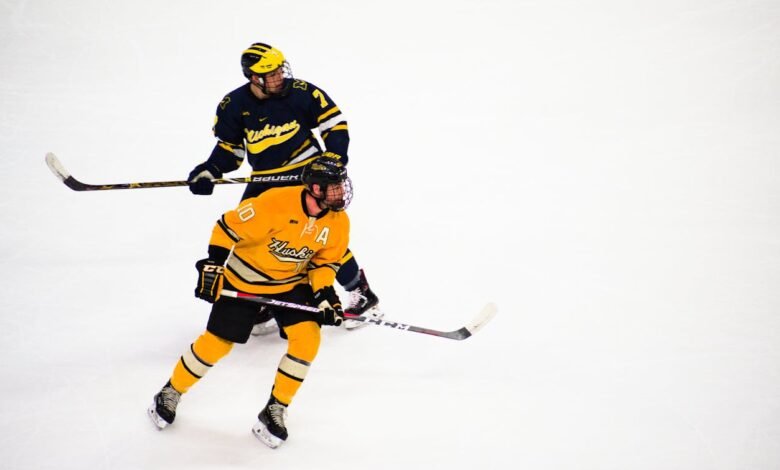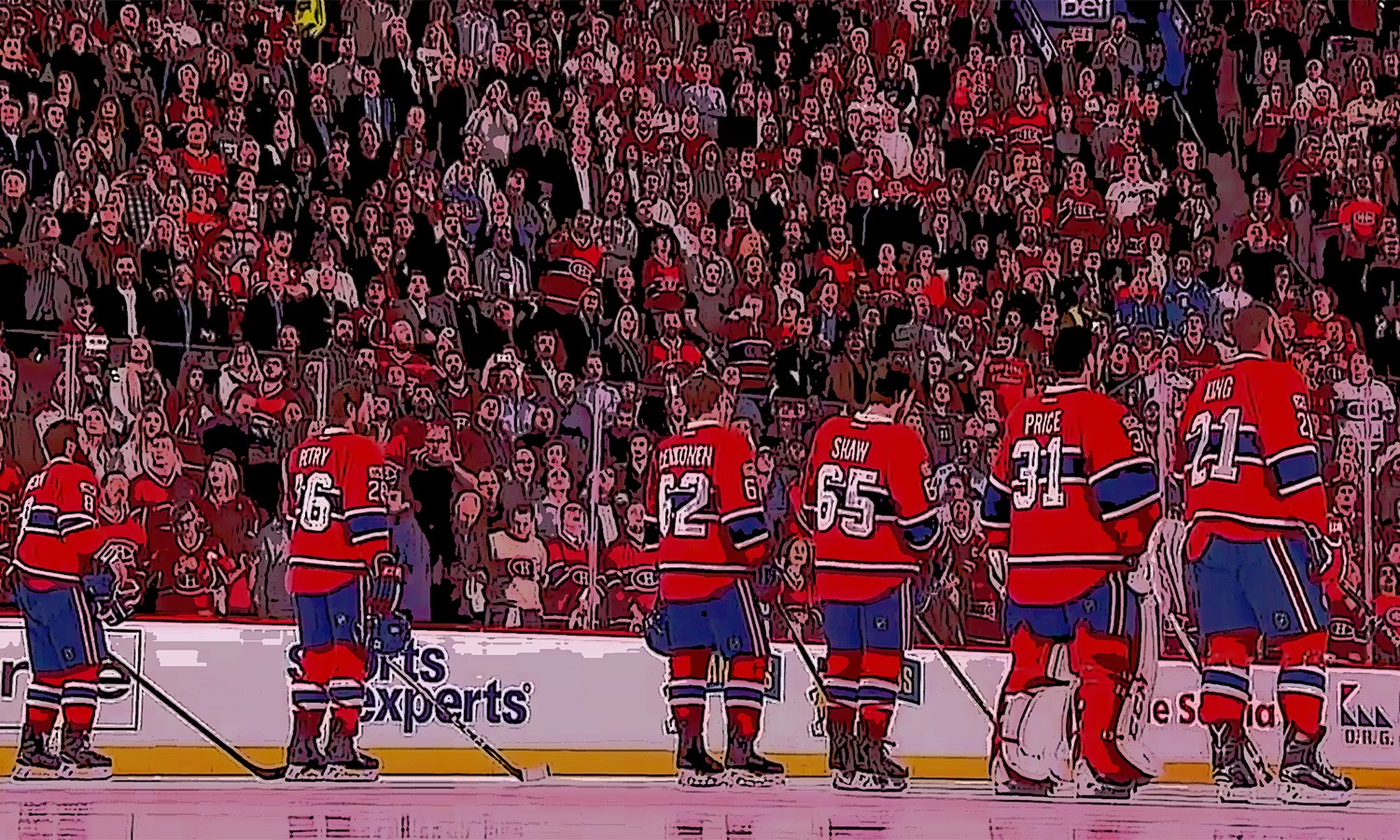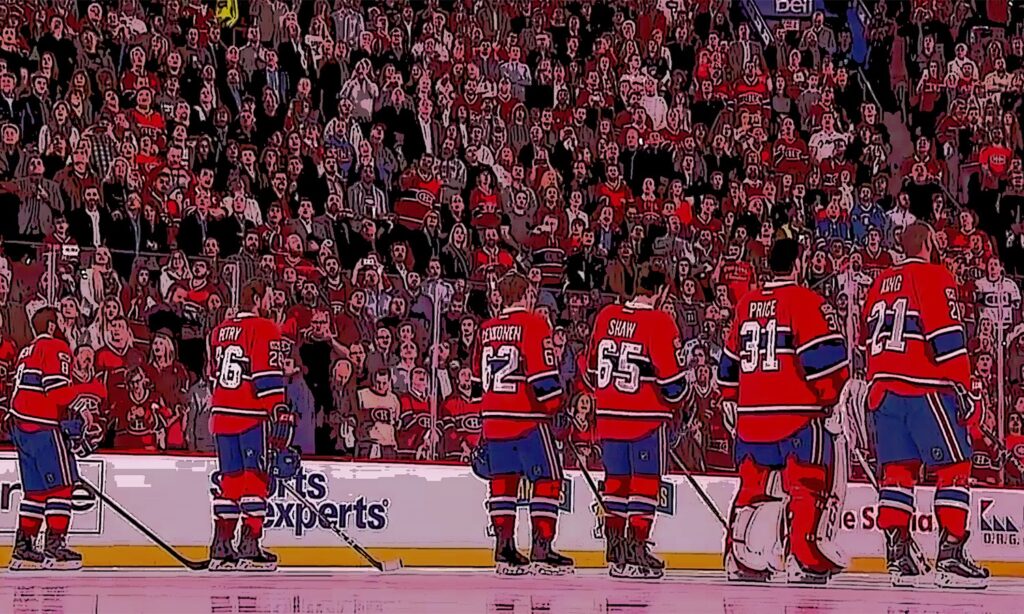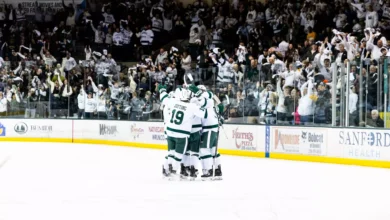How Long Do Hockey Games Last: Quick Guide & Facts

How long do Hockey games last? Hockey games typically last around two and a half hours, including breaks and intermissions. The fast-paced nature of the sport, with three 20-minute periods, results in a relatively short duration compared to other sports.
Fans can expect an intense and action-packed experience during this time, with frequent goals, power plays, and physical play. The game clock only stops during stoppages in play, such as penalties, goals, and timeouts. With the clock constantly ticking, teams strive to outscore their opponents within the allotted time.
Whether watching live at the arena or from the comfort of home, hockey fans are guaranteed an exciting and thrilling spectacle that doesn’t drag on for too long.
Introduction To Hockey Game Durations
Hockey games typically last around 2 to 2. 5 hours, consisting of three 20-minute periods. However, factors like stoppages and overtime can extend the game duration. Understanding these timeframes helps fans follow the fast-paced action on the ice.
Introduction to Hockey Game Durations:
The Basic Structure
How long do Hockey games last? Hockey games are typically divided into three periods, each lasting 20 minutes.
Intermissions are held between periods, providing teams a chance to rest.
Factors Influencing Game Length
- Penalties can extend game time.
- Overtime periods are added if the score is tied.
- Stoppage of play for injuries or reviews.
Standard Length Of Professional Hockey Games
Professional hockey games typically last around 2-3 hours, consisting of three 20-minute periods. However, with stoppages and intermissions, the total time can vary slightly. The standard length ensures an exciting and competitive game for both players and fans.
Professional hockey is one of the most exciting and fast-paced sports in the world. Hockey games can be played at different levels, from amateur to professional, and the length of the game can vary depending on the level of competition. In this blog post, we will focus on the standard length of professional hockey games, specifically in the NHL and international play.
Nhl Game Breakdown
The National Hockey League (NHL) is the premier professional hockey league in North America. The standard length of an NHL game is 60 minutes, which is divided into three periods of 20 minutes each. There are two intermissions during the game, each lasting 17 minutes. This allows players to rest and regroup before returning to the ice for the next period. In the event of a tie after regulation time, the game will proceed to overtime.
Overtime is a sudden-death period lasting five minutes. If neither team scores during overtime, the game will proceed to a shootout. In a shootout, each team selects three players to take a penalty shot against the opposing team’s goaltender. The team with the most goals at the end of the shootout wins the game.
International Play Variations
International hockey games can vary in length depending on the level of competition and the rules of the tournament. In Olympic ice hockey, for example, games are played with three 20-minute periods, just like in the NHL. However, there is no shootout in Olympic hockey. Instead, if the game is tied after regulation time, the game will proceed to a 10-minute sudden-death overtime period. If no team scores during overtime, the game will end in a tie.
In other international tournaments, such as the World Junior Hockey Championship, games are played with three 15-minute periods. If the game is tied after regulation time, there will be a 10-minute sudden-death overtime period. If no team scores during overtime, the game will proceed to a shootout. In conclusion, the standard length of a professional hockey game is 60 minutes, divided into three periods of 20 minutes each. NHL games have two intermissions of 17 minutes each, and in the event of a tie, the game will proceed to overtime and a shootout. International hockey games can vary in length and rules depending on the tournament, but generally follow a similar structure to NHL games.
Youth And Amateur Hockey Timelines
When it comes to youth and amateur hockey timelines, understanding the duration of games is essential. The length of hockey games can vary depending on the age group and league-specific rules. Let’s delve into the timeframes for different age groups and explore how league regulations impact the duration of matches in youth and amateur hockey.
Age Group Variations
In youth and amateur hockey, game durations are tailored to suit the age and skill level of the players. Typically, hockey games for younger age groups are shorter to accommodate their stamina and attention span. Below is a breakdown of the average length of games for different age groups:
| Age Group | Game Duration |
|---|---|
| Under 8 | 1 hour (including breaks) |
| Under 10 | 1.5 hours (including breaks) |
| Under 12 | 2 hours (including breaks) |
| Under 14 | 2.5 hours (including breaks) |
League-specific Rules
League-specific rules and regulations play a significant role in determining the duration of hockey games. Certain leagues may have modified game lengths or additional time constraints to align with their developmental objectives. Here are some examples of how league-specific rules can influence game durations:
- Some leagues implement running time to ensure games do not exceed a specified duration.
- Age-appropriate rules such as smaller ice rinks and reduced player numbers can impact game length.
- In certain leagues, overtime rules and shootouts may be utilized to determine a winner within a specific timeframe.

Credit: www.gaimday.com
Overtime And Shootouts Explained
Hockey games typically last around 2-3 hours, including overtime and shootouts if needed. Overtime consists of a sudden-death period lasting up to 20 minutes, followed by a shootout if no winner is determined. This thrilling conclusion adds excitement and unpredictability to the game.
Regular Season Protocols
In the regular season of hockey games, there are specific protocols in place for overtime and shootouts. When the game is tied at the end of the third period, teams proceed to a five-minute overtime period. This overtime period is played with a 3-on-3 format, meaning each team has three skaters on the ice, excluding the goaltender. If no goals are scored during the overtime period, the game moves on to a shootout.
Shootouts consist of three rounds, where each team selects three players to take penalty shots against the opposing goaltender. If the score remains tied after the three rounds, the shootout continues in a sudden-death format until a winner is determined.
Playoff Overtime Differences
The rules for overtime in playoff games differ slightly from those in the regular season. In playoff games, there are no shootouts. Instead, teams continue to play 20-minute overtime periods until a goal is scored. The teams change ends after each period, and the game continues until one team scores a goal to secure the victory. During playoff overtime, teams play with a 5-on-5 format, just like in regulation time. This allows for more players on the ice, increasing the intensity and excitement of the game.
The extended periods of playoff overtime can be incredibly suspenseful, as teams battle it out for the crucial goal that will determine their fate in the playoffs. Understanding the protocols for overtime and shootouts in hockey games adds an extra layer of excitement for fans. Whether it’s the regular season with its 3-on-3 overtime and shootout format or the high-stakes playoff games with continuous 20-minute overtime periods, these game-ending scenarios often lead to thrilling moments that keep fans on the edge of their seats.
So, next time you’re watching a hockey game, be prepared for the possibility of overtime and shootouts, as they can turn an already intense game into an unforgettable battle for victory.
The Role Of Timeouts And Breaks
Hockey games typically last around 2 to 2. 5 hours, including timeouts and breaks. These breaks allow players to rest, strategize, and make necessary substitutions, contributing to the overall duration of the game.
Hockey games are intense and physically demanding, with players constantly skating up and down the ice, chasing after the puck, and battling for possession. With all this action, it’s important for players to take occasional breaks and timeouts to rest, strategize, and catch their breath. In this article, we’ll explore the various types of breaks and timeouts in hockey games and how they impact the game’s duration and flow.
Scheduled Breaks
Hockey games are divided into three periods, each lasting 20 minutes of playtime. In between periods, there is a scheduled break of 15 minutes, during which players can rest, rehydrate, and refocus for the next period. This break is also an opportunity for coaches to make adjustments to their game plan and motivate their players.
Coach-initiated Timeouts
In addition to the scheduled breaks, each team is allowed one timeout per game, which can be called by the coach at any point during the game. This timeout lasts for one minute and can be used for various reasons, such as to rest tired players, discuss strategy, or challenge a referee’s call. It’s important for coaches to use their timeout wisely, as they only have one per game.
Injury Timeouts
If a player is injured during the game, the clock is stopped until the player is able to leave the ice or resume play. This can cause the game to last longer than the standard 60 minutes, as the clock is stopped during injury timeouts.
Overtime
In the event of a tie game at the end of regulation, a 5-minute sudden-death overtime period is played, during which the first team to score wins the game. If neither team scores during this period, a shootout is used to determine the winner. Overtime and shootouts can significantly extend the length of a hockey game.
In conclusion, timeouts and breaks play an important role in the duration and flow of hockey games. Scheduled breaks allow players to rest and coaches to strategize, while coach-initiated timeouts can be used for various reasons. Injury timeouts and overtime periods can also impact the game’s length. Understanding these rules and how they affect the game can enhance your enjoyment of hockey as a spectator or player.

Credit: fanbuzz.com
Impact Of Penalties On Game Length
Over the years, the duration of hockey games has undergone significant changes. From its early beginnings to the modern era, the time it takes to complete a hockey game has been influenced by various factors. Let’s take a closer look at the evolution of game duration and compare it across different eras.
Evolution Over The Years
The game duration of hockey has evolved considerably since its inception. In the early days, when hockey was still in its nascent stage, games were often shorter in duration compared to the present. In the late 19th and early 20th centuries, matches typically lasted around 60 minutes, including breaks. However, as the sport grew in popularity and gained more structured rules, the game duration gradually increased.
By the mid-20th century, hockey games started to extend beyond the traditional 60-minute mark. The inclusion of overtime periods and shootouts in case of a tie added extra time to the game. These additions not only added excitement but also impacted the overall duration of matches.
Comparisons Across Eras
When comparing game durations across different eras, it’s important to consider factors such as rule changes, advancements in player fitness, and strategies employed by teams. These elements have influenced the pace of the game and consequently affected its duration.
In the early years, with less structured gameplay and fewer breaks, games tended to be relatively shorter. As the sport became more professionalized and strategies evolved, the pace of the game increased, resulting in longer match durations. Additionally, advancements in player conditioning and training techniques have allowed athletes to sustain a higher level of performance throughout the game, contributing to extended playing times.
To provide a clearer comparison, let’s take a look at the average game durations of the past few decades:
| Era | Average Game Duration |
|---|---|
| 1970s | 2 hours |
| 1990s | 2 hours and 15 minutes |
| 2010s | 2 hours and 30 minutes |
These figures illustrate a gradual increase in game duration over time. However, it’s worth noting that individual matches can still vary in length depending on factors such as overtime play and penalties incurred.
As the sport of hockey continues to evolve, it is possible that game durations may undergo further changes. However, the essence of the game and the excitement it brings remain constant, regardless of how long it takes to reach the final buzzer.
Historical Changes In Game Duration
Hockey games typically last around 2-3 hours, including breaks and stoppages. However, in the past, games could extend much longer due to fewer regulations on game duration. Over time, rules and time management have been implemented to streamline and standardize the length of hockey games.
Record-breaking Games
Hockey games can last for hours, with some holding record-breaking lengths.
Unexpected Delays
Delays, like equipment malfunctions or severe weather, can unexpectedly prolong game durations.

Credit: www.gaimday.com
Frequently Asked Questions
How Long Is A Standard Hockey Game?
A standard hockey game consists of three periods, each lasting 20 minutes of play time. However, the total duration of a game can vary due to stoppages, intermissions, and overtime.
What Factors Can Influence The Duration Of A Hockey Game?
Several factors can influence the duration of a hockey game, including stoppages for penalties, injuries, and timeouts, as well as the occurrence of overtime periods.
Do Hockey Games Ever Go Into Overtime?
Yes, if the score is tied at the end of regulation time, hockey games proceed to overtime, which consists of one or more additional periods of play until a winning team scores a goal.
How Long Can Overtime Extend A Hockey Game?
Overtime in hockey can extend the duration of a game by up to 20 minutes, depending on the rules of the specific league or competition. If the game remains tied, a shootout may follow to determine the winner.
Conclusion
Hockey games typically last around 2 to 2. 5 hours, including breaks and intermissions. Understanding the duration of a game can help fans plan their schedules accordingly. Whether you’re a dedicated hockey enthusiast or a newcomer to the sport, knowing the duration of a game adds to the overall experience.





